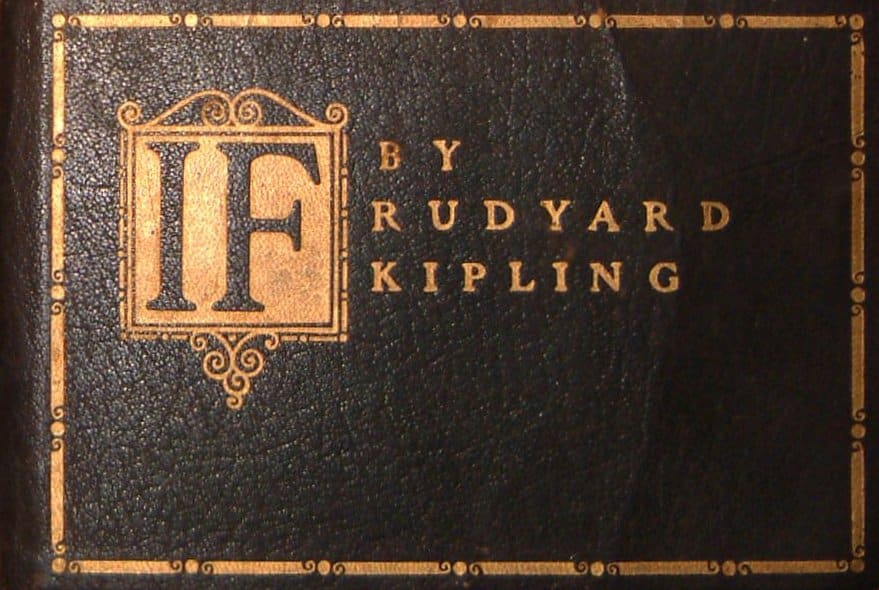The emotional and advising lines of Kipling are often considered a set of rules for moral and personal integrity, self-improvement, and achievement in life. It was first published in the “Brother Square-Toes” chapter of Rewards and Fairies, as a collection of verse and short stories.
While the poem is addressed to Kipling’s son John, it was inspired by a great friend of his, Leander Starr Jameson (Poetry Foundation, 2014). Is the image of a beloved son and/or daughter, desired and aspirated by Kipling, the perfect one?
Kipling’s beautiful and warm lines are the expression of what he missed more in his life; love and attention. In his early childhood, he was sent away by his parent and abused by his foster mother, experiences that contributed to his being a failure at public school.
His emotional and psychological battlefield was deeply affected by the deaths of his two children. This life path contributed to the creation and development of a personality profile, highly evaluated by a man’s indifference towards pleasure or pain and he never relates it with wealth, power, or fame.
In the first stanza, the poem’s author says if his son keeps calm even everybody can’t, that if he can keep his reasoning when people around him cannot; if he can be confident when others do not trust him; if he can endure and be tough; if he can handle being lied about but be sincere to himself, and being detested but not detest himself; it doesn’t look handsome or have wisdom: so creating the outline of a strong character in the wilderness of the society.
In the second stanza, the author represents his definition of a strong personality by suggesting to his son that emotions shouldn’t make his reason blind; thoughts are valuable if he can make those a real action; he should be able to deal with victory and misfortune; he should be carefully observant to how his words could be used by diabolic persons, he should find the devotion to give life again to what is his will.
In the third stanza, the author refers to stoicism and endurance as part of dealing with manhood: he expects his son to have as a grown-up: by being able to risk all that he has and even he lose, do it with pride and keep it a secret; by knowing to hold on his physical, emotional and psychological strengths to make it work because where there is “a will” there is a place for a “do”, no matter the circumstances.
In the last stanza the author is trying to teach his son to be virtuous and noble among people no matter their social or hierarchical ranking and without laying claim to more than is his; to be able to find the equilibrium and handle friends and enemies with convenience; to be the man on whom friends count on, but not as much as to make use to or profit out of it; then every minute of his life can be filled with meaning:
The last two lines reveal the aim and its fulfillment of all the cascade of the advice and counsel he provided to his son – achievement of manhood:
“Yours is the Earth and everything that’s in it,
And—which is more—you’ll be a Man my son!”
Every line of the poem has the tone and the truth of a slogan about life and can be approached as a personal life philosophy built upon virtues of fortitude, responsibilities, and resolution. The poem contains a multitude of characteristics viewed as essential to the ideal man. In particular, a man must be humble, patient, rational, truthful, dependable, and persevering. Even written in 1895 and published in 1910, the poem still stores the quality of inspirational and motivational effect on the reader.


thanks for helping
this is really good and i love this poem
Thanks!